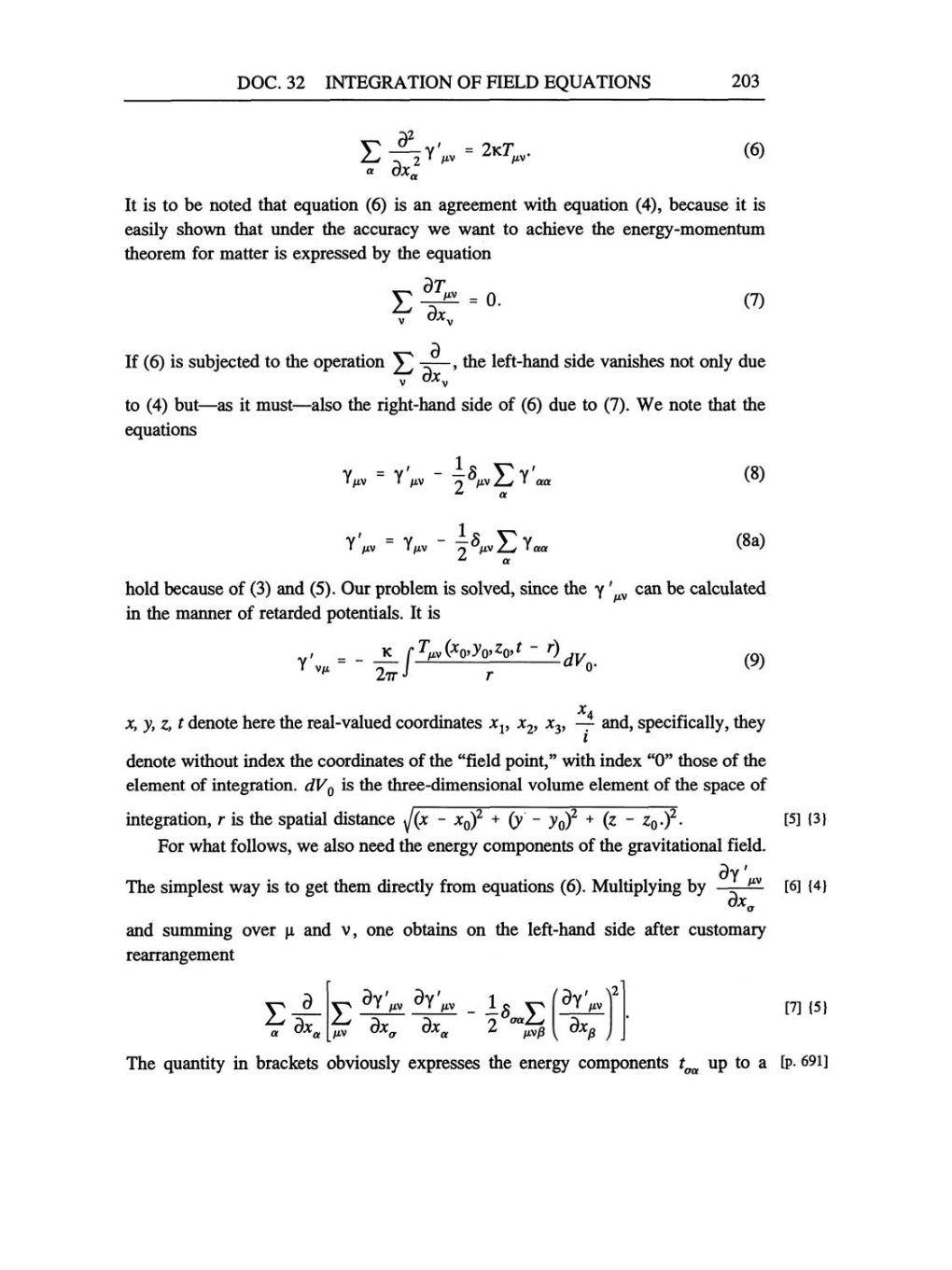DOC. 32 INTEGRATION OF FIELD
EQUATIONS
203
=
2KTmv.
a
dxa2
(6)
It
is to
be noted that
equation
(6)
is
an
agreement
with
equation
(4),
because it is
easily
shown that under the
accuracy
we
want
to
achieve the
energy-momentum
theorem for
matter
is
expressed by
the
equation
E
3^
=
°-
V
dxv
(7)
If
(6)
is
subjected
to
the
operation
Ed/dxv,
the left-hand side vanishes
not
only
due
to (4)
but-as
it
must-also
the
right-hand
side
of
(6)
due to
(7).
We
note
that
the
equations
Y
/XV
=
y'/iv
-
-8
V
Y'
»
2
v*
'
OLOL
(8)
/IV
=
y
/XV
-
-s
TyI
/xv
/
v
aa
^
a
(8a)
hold because
of
(3)
and
(5).
Our
problem
is
solved,
since the
y'uv
can
be
calculated
in the
manner
of
retarded
potentials.
It is
V/i
=
--
2
TT
Jf
Tßv(X
O'yO'tO't
-r)
dV0
(9)
x,
y,
z,
t
denote here the real-valued coordinates
x1,
x2, x3,
x4/i
and,
specifically, they
denote without index
the coordinates
of
the
"field
point,"
with index "0" those
of
the
element of
integration.
dV0
is the three-dimensional volume element of the
space
of
integration, r
is
the
spatial
distance
/(x
-
x0)2
+
(y
-
y0)2
+
(z
-
z0.)2.
For what
follows,
we
also
need
the
energy components
of the
gravitational
field.
The
simplest way
is to
get
them
directly
from
equations (6). Multiplying by
dy'uv/dxo
and
summing
over u
and
v, one
obtains
on
the left-hand side after
customary
rearrangement
a
^
dx
a UA,a
E
/XV
öy'^v
^y'iiv
dx_
dx
_
f^y
fiv
dxa
2
{
dxß
J
[5]
{3}
[6] {4}
[7] {5}
The
quantity
in brackets
obviously expresses
the
energy components
toa
up
to
a
[p.
691]
